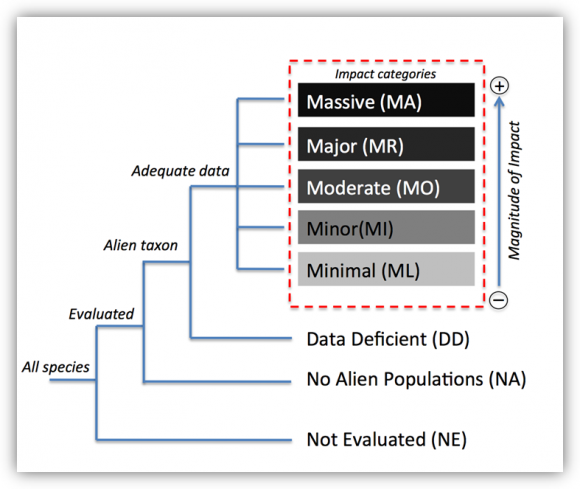27 June 2016 | By Thabiso Mokotjomela
A recent study by Thabiso Mokotjomela (Research Fellow, University of the Witwatersrand) and colleagues at the C·I·B (core team members Karen Esler & Colleen Downs) found that a few garden birds, such as the red-winged starlings can help the spread of alien invasive plants.
When birds eat seeds, they can either damage the seeds during digestion, or pass them through without any damage to the seed, making them effective seed dispersers. The seed dispersal effectiveness (SDE) is a comparative measure of animals that disperse seeds.
Earlier studies found that the passage of seeds through a bird’s gut can influence the germination (the quality) of the seeds. The body size of the bird often determines the number of seeds (the quantity) that passes through the gut. The seed dispersal effectiveness (SDE) of a vertebrate should consider the quality and quantity of the seeds which pass through the gut.
Mokotjomela studied four captive indigenous bird species: Knysna turacos (Tauraco corythaix), red-winged starlings (Onychognathus morio), red-eyed doves (Streptopelia semitorquata) and laughing doves (Spilopelia senegalensis) using seed of the alien invasive tree, rooikrans (Acacia cyclops) to determine the quality component of SDE.

Data on body size of the bird species (a proxy for numbers of seeds – quantity) and records of their distributions were obtained from Avian Demography Unit, University of Cape Town.
Thabiso and colleagues found that the birds that did not digest seeds (Knysna turacos and red-winged starlings) were more likely to facilitate dispersal and recruitment of an invasive plant (rooikrans) than the two dove species which partly damaged eaten seeds. Surprisingly, scarification of a few surviving seeds during digestion by the red-eyed dove, increased their germination ability, elevating its SDE level. Laughing doves only dispersed seeds that survived gut passage without changing germination rates. Their study shows that SDE is a relevant method to determine the spread of alien plants.
“Based on the broad geographic range and abundance of the two dove species, the results confirmed their effectiveness in transporting seeds, and how the effectiveness as dispersers differ among and between birds” explains Thabiso Mokotjomela.
This paper, published in the South African Journal of Botany, was dedicated to a global symposium on “Frugivory and Seed Dispersal” held in South Africa in June 2015 (http://www.fsd2015.ukzn.ac.za/)



